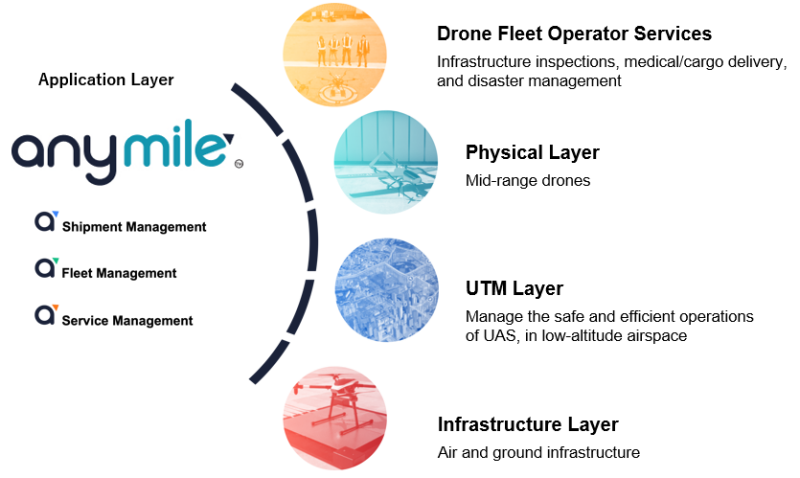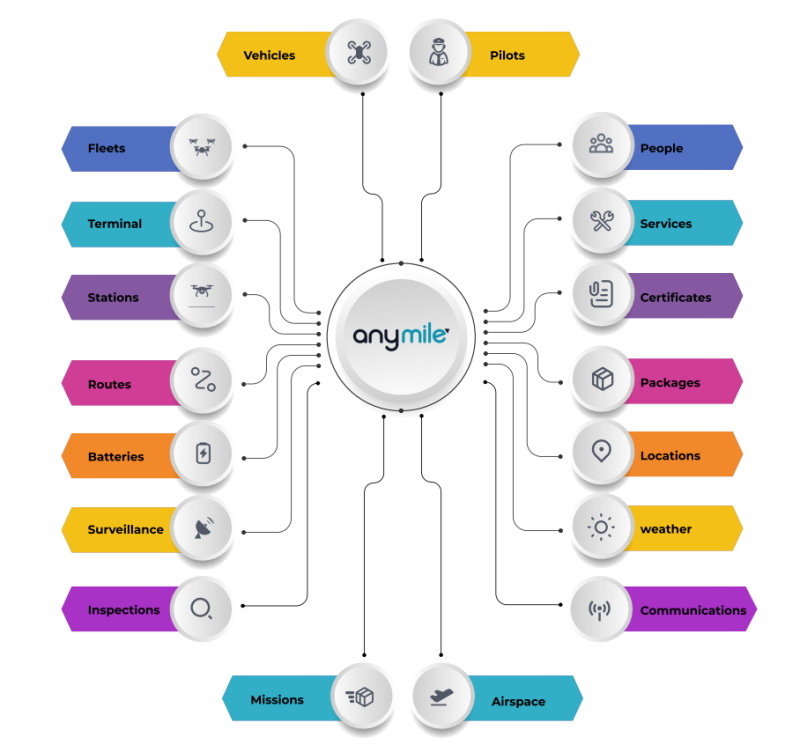Given the early nature of the uncrewed aviation industry, most companies are still in the startup phase of any commercial endeavor and very few have crossed into generating revenue and profits. Therefore, the advice to these entrepreneurs is always the same: “Focus on the mission and define your differentiator clearly.”
Creating an aviation company from scratch is difficult enough when your goal is to either design and manufacture aircraft or provide a service with them, so the challenge for new organizations getting into the space is to select where to focus their scarce research and development (R&D) resources.
Focusing on the mission involves not only keeping a laser focus on the end product/service but also knowing when to go outside the company and select partners to do jobs that do not fall within the scope of the core mission.
That is why “software as a service” (SaaS) has become such a magic word for those who have embarked on creating the next generation of vehicles and delivery models for remotely piloted aircraft. The complexity of the aviation business is sometimes overlooked when embarking on the fascinating adventure of designing new aircraft and imagining a future of less polluting vehicles delivering packages in a fraction of the time at a fraction of the cost.
But the question remains, “How can we accomplish a great aircraft design at the same time we program an entire logistics solution that would allow our vehicles to perform their duties?” The answer might be, “Do not waste your time in that solution, find a partner in the industry that focuses exclusively on developing logistics for uncrewed aviation.”
The perfect example of a SaaS drone-based logistics platform is AnyMile by Mitsubishi Electric, which has been perfecting the art of integrating third-party components to create the perfect logistics tool for the future of remotely piloted deliveries.
We had a fascinating conversation with Erik Mintz, Director, Mobility Infrastructure at AnyMile, who gave us an exclusive interview about the broad benefits of using SaaS and the specific functionality of the AnyMile platform.
 “The logistics workflow for aerial deliveries is a maze of regulations and technological dependencies that requires a dedicated team to be up to speed in every aspect of the delivery chain,” Erik said. “What we do at AnyMile is develop a complete set of tools and third-party partnerships that allows our customers to focus on their mission and let the AnyMile platform handle the logistics aspect of the business. We call it end-to-end drone-based logistics platform.”
“The logistics workflow for aerial deliveries is a maze of regulations and technological dependencies that requires a dedicated team to be up to speed in every aspect of the delivery chain,” Erik said. “What we do at AnyMile is develop a complete set of tools and third-party partnerships that allows our customers to focus on their mission and let the AnyMile platform handle the logistics aspect of the business. We call it end-to-end drone-based logistics platform.”
A good logistics platform for uncrewed aviation needs to consider a series of separate and disparate technologies, such as uncrewed traffic management (UTM) that needs constant update and upgrade to be up to the latest potential changes in regulation and airspace specifications.
“At AnyMile, we have focused on creating a worldwide network of partners such as OneSky for UTM and Resilienx for in-time aviation safety management systems or IASMS,” Erik said. “Only by partnering with the best in every aspect of the delivery workflow, we can guarantee our customers a service that is reliable, allowing them to focus on the quality of their specific service and channel the resources to their core mission.”
 SaaS companies offer subscription-based pricing models (monthly or annually) and are responsible for maintaining and updating the software, including fixing bugs, adding new features, and ensuring security. The beauty of this business model is that when a user logs-in, the updates have been typically rolled out automatically to all users.
SaaS companies offer subscription-based pricing models (monthly or annually) and are responsible for maintaining and updating the software, including fixing bugs, adding new features, and ensuring security. The beauty of this business model is that when a user logs-in, the updates have been typically rolled out automatically to all users.
“The idea is to establish AnyMile as the marketplace where all the elements are there for companies to launch their services. Our customers are mainly in the business to business (B2B) delivery model and that is not something that will happen in the future, it is happening today, as we speak,” Erik stated. “Real deliveries by the hundreds are happening around the world between corporations and in modalities that do not necessarily include a final user or customer. Deliveries to oil rigs are a good example of a form of delivery that is a reality today. Our job is to integrate all the elements involved in a typical delivery workflow, such as aircraft, weather, traffic, ground infrastructure, etc., etc., into a coherent platform that would simplify the scheduling and successful delivery of the service each and every time.”
As companies adopt AnyMile, they will continue to accumulate valuable flying data that will be key in the massification and growth of the system in preparation for a time when flights beyond the visual range of the operator (BVLOS) would be the norm and not the exception. Kudos to the team at AnyMile.















Comments